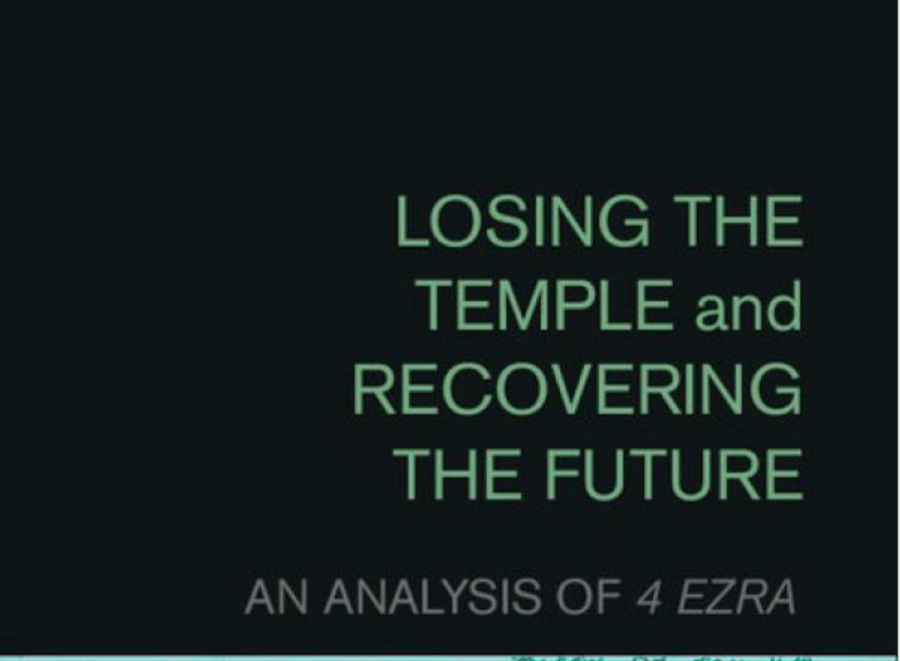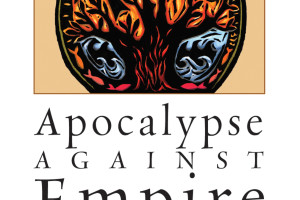Hindy Najman’s Losing the Temple and Recovering the Future: An Analysis of 4 Ezra offers a fresh and compelling reading of the apocalypse known as 4 Ezra. She approaches the text, quite justifiably, as a document that responds to the trauma and disorientation caused by the destruction of the Second Temple. The way that 4 Ezra does this, suggests Najman, is conceptually paralleled to what we might think of as a “reboot” (16). That is, 4 Ezra trades upon images and concepts from its literary precursors in order to help the reader leave behind many of the hopes and expectations from the late Second Temple. Najman posits that the overarching idea of the book—“revelation inflected by destruction”—is carried out by a constellation of four elements: (1) the selection of Ezra, (2) the burning of the Torah and the reception of apocalyptic visions, (3) the wilderness as place of transformation, and (4) hope for the future situated in the world to come (25). The remaining chapters in the book handle each of these elements.
In chapter 2, Najman turns her attention to the reason the author chose the figure “Ezra” as the narrative’s protagonist. The question provides her the necessary space for a thorough and sophisticated discussion on the role of pseudepigraphy (34-62). Within this discussion, Najman demonstrates the ways in which the protagonist is fashioned after a number of biblical figures; nevertheless, she argues that the author lands on Ezra from Ezra-Nehemiah, because he is envisioned as someone “capable of leading the people to renewal after destruction” (60). This point is clarified further at a later point in the book: “By choosing Ezra as the protagonist’s primary identity, the writer(s) sought to undo the freezing of time characteristic of trauma by returning to the first destruction and imagining an alternative past without a reconstructed Temple and so without the disappointment of a second destruction” (129-30).
Next, Najman examines 4 Ezra’s radical move towards de-texualization. The Torah has been burned; the image of the seer who eats God’s revelation has devolved “from a scroll back into food” (70); Scripture cannot be cited (no text qua text is ever referenced); and ultimately, the protagonist’s answer, while certainly guided by scriptural memory, comes through his dialogue with the angel Uriel (84-91). Thus she concludes, “In the trauma induced by the destruction of the Temple, Ezra is instructed in the interpretation of visions, not of texts” (92). These interpretations guide the protagonist—and the reader along with him—in the grieving process.
How then does the world get re-centered? Najman avers that the wilderness functions as the locus of transformative renewal. Her survey of a range of Second Temple texts demonstrates that the wilderness, while certainly a place of exile and alienation, also functioned as a place for spiritual renewal and divine revelation (97-108). It is here that Ezra receives the knowledge that God is keeping the heavenly temple—the temple build without human hands—until the time in which he will institute it on earth. “Indeed,” Najman writes, “it would now appear that the earthly Temple had to be destroyed, in order to clear the way for the ultimate manifestation of the celestial Temple in its place” (149, italics original). Hope in the heavenly temple is not a deus ex machina, however, since Ezra’s ability to mourn and lament is at the center of what qualifies him to lead Israel into a future without an earthly temple (150-2). As Moses sympathized with the people and received the Torah, so too Ezra is chosen to receive the twenty-four exoteric books and the seventy esoteric books (155). In the end, Torah is restored, albeit with additional esoteric instruction for the few privileged readers (158).
Najman’s Losing the Temple marks an incredible achievement on a number of levels. First, it fills a much needed lacuna: outside of Michael Stone’s magisterial commentary and a handful of monographs, it is difficult to find good books on 4 Ezra. Najman’s work is, without doubt, a stellar piece of writing. Second, Najman’s approach to 4 Ezra is compelling, and is sure to derive attention from the scholarly community for years to come. Students who wish to stay up-to-date on current research in 4 Ezra will find this book very helpful. Third, her methodological approach offers a model of what “good scholarship” looks like. As someone who is currently in the “dissertation phase” of a biblical studies PhD, this book has provide me with an invaluable model. Fourth, the book is written in such a way that it could realistically serve as an engaging introductory text. Teachers, students, and anyone else generally interested in 4 Ezra will appreciate Najman’s style, clarity, and readability. In short, you want this book!
Bottom Line: Hindy Najman’s Losing the Temple and Recovering the Future is an engaging, well-written analysis of the book of 4 Ezra. With all things taken into consideration, this may be the single best book that we have on the subject. I highly recommend it to all students of religion and biblical studies.
Review by Max Botner
University of St Andrews





Leave a Reply
Your email is safe with us.